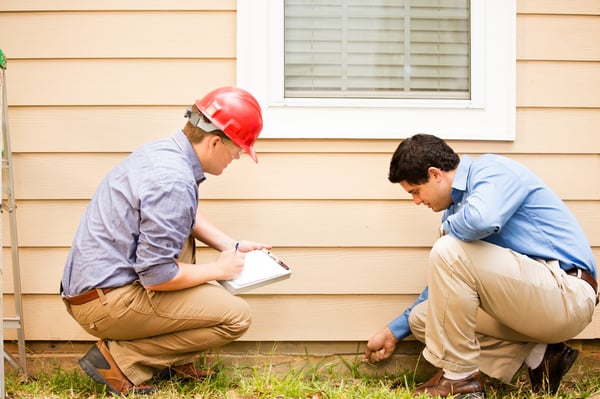Radon is a naturally occurring radioactive gas you can't see, feel taste, or smell.
It's produced when uranium, thorium, and radium break down in soil, rock, and water. It's then released into the air.
Radon gas leaves the soil and becomes part of the air and water.
It can be in the air around you outdoors, but it's usually in tiny amounts that aren't harmful.
It's large amounts of radon cause health problems.
If radon can seep into your home, workplace, or school, it can get stuck inside and accumulate to levels that are dangerous for all of the occupants.
Even though radon is a natural gas that comes from the earth, it's toxic if you breathe in a lot of it over a long time.
So who is most at risk for radon exposure?
In the article below, we will see who is most at risk for radon exposure and what you can do to lower your chances of being exposed to the harmful gas.
Table of Contents
- Who Is At Risk For Radon Exposure
- What Are The Health Effects of Radon
- What Are The Symptoms of Radon Poisoning?
- Test Your Home For Radon

Who Is At Risk For Radon Exposure?
Unfortunately, everyone is at risk of being exposed to radon.
There are areas in the country that have higher occurrences of elevated radon levels, but there isn't a single spot that is "safe."
We're exposed to radon when you breathe it in.
You can encounter elevated levels of radon in the workplace, a school, your home, or any other building.
We spend the most time at home, so for most people, that's where radon exposure is most likely.
Buildings, like your home, school, or office, are built into the ground.
If there are cracks in floors or walls or small openings for pipes or wires that aren't fully sealed, radon can leave the soil and get indoors.
Once it's made its way into your home, it can get trapped inside, where it builds up to unsafe levels.
It can also get into your home through well water.
Radon is in water that comes from lakes, rivers, and reservoirs.
But, most of it is released into the air before the water gets to you.
If your home's water supply comes from a well or another groundwater source, it may have more radon than water from a treatment facility.
And, exposure to radon can happen in any type of home, whether it has a basement, a crawl space, or is built on a slab.
However, radon is more likely to accumulate in homes that are:
- Very well insulated
- Tightly sealed
- Located in parts of the country where the soil contains a lot of uranium, thorium, and radium
It's estimated that one in every 15 homes has high levels of radon.
The highest concentration of radon tends to be found in the basement or on the first floor because of the proximity to the ground.
Although it's rare, radon can even enter your home via building materials.
Building materials, like concrete, wallboard, and granite countertops, are made from natural substances that give off radon.
Luckily, the amount these sources give off is mostly low.
Although you spend most of your time at home, your job may put you in contact with radon, especially if you work underground.
What Are The Health Effects of Radon?
When radon is breathed in, it gets into the lining of your lungs and gives off radiation.
Over time, that can damage the cells there and lead to lung cancer.
Radon is the second leading cause of lung cancer, right behind cigarette smoking.
And lung cancer kills more Americans than any other form of cancer.
If you breathe a lot of radon and smoke, your chance of getting lung cancer is very high.
Some research links radon to other forms of cancer, like childhood leukemia, but the evidence for that isn't as clear.
For more information read our blog post: "The Signs and Symptoms of Lung Cancer."
What Are The Symptoms of Radon Poisoning?
Unfortunately, you could breathe in dangerous levels of radon every day for years and have no idea.
The most dangerous part of radon exposure is that you can't see it, taste it, or smell it.
And, what's worse is that you won't have any symptoms to alert you.
Instead, many people don't know they've been exposed to radon until health problems from exposure, such as lung cancer, show up after many years.
Lung cancer may start as a nagging cough, shortness of breath, or wheezing that doesn't go away.
Other symptoms include coughing up blood, having chest pain, or losing weight without trying.
If you notice any of these symptoms, call your doctor right away.
There are no routine medical tests that can tell you if you've breathed in too much radon, and no treatments will clear it from your body.
The only thing you can do to protect yourself from radon is to test your home for elevated levels.

Test Your Home For Radon
Everyone should know if their home has elevated levels of radon.
And, it's not enough to know that the house next door has been tested and found safe.
Radon levels vary so much that one house can be safe, while the house next door has dangerous levels of radon.
The only way to know for sure if you have too much radon in your home is to get your home tested.
You can do this on your own, but with something as serious as radon poisoning and lung cancer, you should enlist the help of a professional.
Companies like Radon Eliminator can test your home for elevated levels of radon.
Long term tests are best since radon levels can also vary from day to day.
If elevated levels of radon are found in your home, Radon Eliminator can talk to you about radon mitigation systems, and get one installed in your home.
Your radon mitigation system will lower the amount of radon in your home back to a safe level.
If you'd like to speak to Radon Eliminator about getting your home tested, click the button below for a discounted test.





